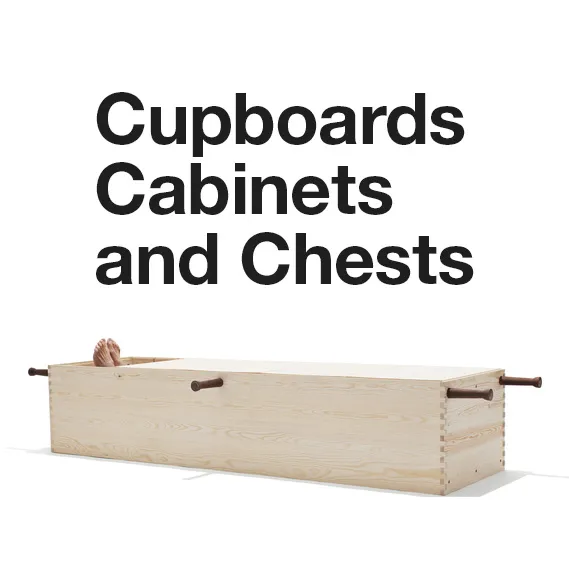– domestic storage furniture through the ages
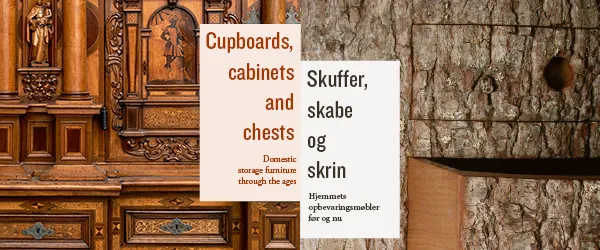
Show me your closet and I’ll tell you who you are!
The way we furnish our homes has traced a continuous narrative down the ages. Likewise, the development of storage furniture is also the history of housing culture. But how has furniture types changed to cope with the trend of ever-increasing quantities of possessions? Come and find out while exploring the numerous cupboards, chests of drawers, caskets, bureaus, and glass-fronted cabinets clamouring for attention in a poignant and dramatic arrangement.
The exhibition ‘Cupboards, Cabinets and Chests – domestic storage furniture through the ages’ pinpoint certain periods in the history of furniture by highlighting a number of pieces excelling in good design, superior material treatment, and exquisite ornamentation. More than 60 different pieces and furniture types are represented, of which the large majority comes from Designmuseum Danmark’s own collection. As an extra bonus, the opening of this exhibition will coincide with the Cabinetmakers’ Autumn Exhibition whose actual theme also happens to be storage. This gives you a rare opportunity to gain some insight into the historical spread contained in these two exhibitions – from the gigantic showpieces of the Baroque to examples of ultra-minimalistic, space-saving furniture, and also entirely new and experimenting storage pieces.
From Baroque to minimalism
Concurrently with the changing housing culture, the amount of possessions in private homes grew significantly. 400 years ago, ordinary citizens owned nothing more than could be kept in a chest or a casket. In the 18th and 19th centuries, prosperity had risen to such an extent, especially among the bourgeoisie, that a number of specialised types of furniture to cover various functions was now required. This included large cupboards and chests of drawers for linen, clothes, and table linen; escritoires and bureaus with drawers for papers, bookcases, dressing stands, and washstands for personal hygiene articles, etc. The need for specially designed storage furniture has changed from one piece of furniture meeting one functional requirement to the present-day multipurpose furniture.
An example of this is Søren Ulrik Petersen’s ‘Last Piece of Furniture’, which is a piece of storage furniture that converts into a coffin. Other contemporary Danish furniture designers are also represented in the exhibition, including Louise Campbell, Carlo Volf, and Pil Bredahl, who all offer their innovative ideas of modern storage furniture.
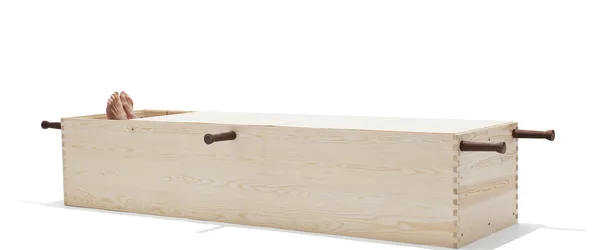
The Last Piece of Furniture. By: Søren Ulrik Petersen. Photo: 2013 © Danish Crafts / jeppegudmundsen.com
Ulla Houkjær, Curator – and curating this exhibition, says:
”Over time, the museum has collected furniture that provides examples of superior craftsmanship, precious materials, and original design. This means that one will not find grandmother’s bookcase or self-assembly cupboards in this exhibition. On the other hand, the exhibition will, in part, provide an interesting glimpse as to how the material and the craftsmanship forming the basis of the furniture has been an important element for the museum and, in part, how certain furniture has disappeared entirely from our homes while other pieces such as the bookcase and the cupboard still have a place in today’s modern homes.”
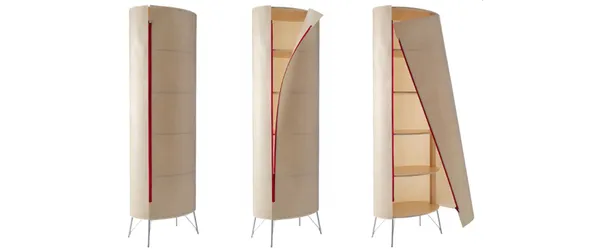
Carlo Volf & Andreas Lund, “Zip”, 2002.
The exhibition takes two directions: firstly a historical one linking the development of furniture types and welfare society. Secondly, the exhibition traces a material direction zooming in on craftsmanship and the use of rare materials as well as ornamentation and techniques. Special tools are displayed and you will be able to smell and touch various types of wood.
Drawings and printed matter show the process from idea to the finished piece of furniture. The exhibition, therefore, has something to offer the person interested in the quality craftsmanship of cabinetmaking, or the one interested in the history of furniture, interior design and furniture design in general.
Find out about the Cabinetmakers’ Autumn Exhibition at www.designmuseum.dk and www.se-design.dk.
The exhibition includes 42 furniture designers offering their individual visions for modern storage furniture.
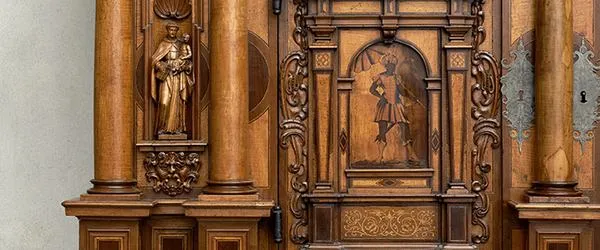
Detail. Cabinet in walnut, the 17th century. Photo: Pernille Klemp
Designmuseum Danmark
Bredgade 68 / 1260 København K
Phone 33 18 56 56
Email: info @ designmuseum.dk
Opening hours and closed days
Tuesday – Sunday, 11 am – 5 pm, Wednesdays 11 am- 9 pm
Monday closed

